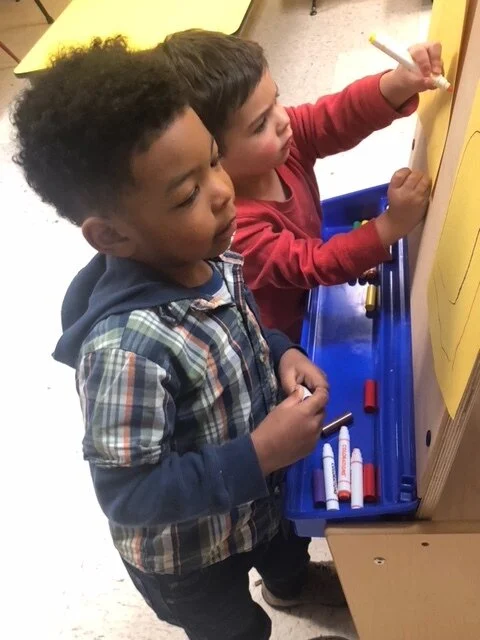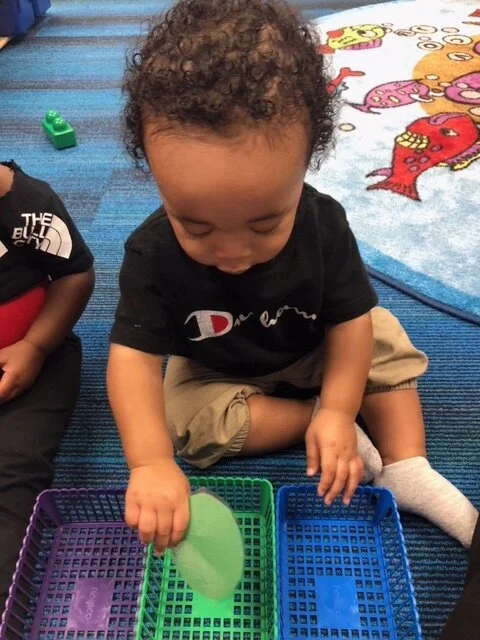Positive Behavior Support - Building Healthy Social/Emotional Health
We support social and emotional health by providing positive guidance and trauma informed care. Children need opportunities to engage with their peers and adults through positive learning experiences.
Supporting Dual Language Learners
Research shows that supporting children’s home languages helps them learn and supports a strong foundation of prior knowledge. This often helps children learn English and succeed in school. Supporting the languages and cultures that make children unique is an important component of developmentally appropriate practice.
Infant Learning Environment:
The infants early learning environment offers a warm, cozy and nurturing learning environment for our non-mobile and mobile infants. In the first year, babies learn to focus their vision, reach out, explore, and learn about the things that are around them. Cognitive, or brain development means the learning process of memory, language, thinking, and reasoning.
Our infant learning environments stimulate learning through reading and language, science exploration, mathematics, large and small muscle development, music and movement, cozy area supports social and emotional health.
Toddlers Learning Environment:
The toddler early learning environment offers toddlers the opportunity to learn and develop in an environment that stimulates growing and learning. During the toddler years, children are moving around more, and are aware of themselves and their surroundings. Their desire to explore new objects and people also is increasing.
Our toddlers learning environment stimulates growing learning through reading and language, science exploration, mathematics, large and small muscle development, music and movement, cozy area and dramatic play supports social and emotional health and many materials in the environment for exploration.
Twos Learning Environment:
Two year-olds are filled with energy and innate curiosity. A two-year-old will experience huge thinking, learning, social, and emotional changes that will help them to explore their new world and make sense of it as they grow more independent.
Our two-year old learning environment is immersed in materials that stimulate problem solving, exploration and independency. The learning environment consist of six learning areas that promote learning and development in reading and language, science exploration, mathematics, large and small muscle development and cozy and dramatic play supports social and emotional health and many materials in the environment for exploration.
Early Preschool Learning Environment:
Early Preschool children are becoming more independent, following directions, working with peers and teachers and developing self-regulation.
Our Early Preschool learning environment is immersed in materials that stimulate problem solving, exploration and independency. The learning environment consist of seven learning areas that promote learning and development in reading and language, science exploration, mathematics, large and small muscle development and cozy and dramatic play supports social and emotional health, technology and many materials in the environment for discovery.
Preschool Learning Environment:
Preschool children are developing problem solving skills, respect for others and their communities and strong self-esteem. Children in the learning environment are preparing for kindergarten and school readiness through their day to day interactions with the learning environment.
Our Preschool learning environment is a STEM ready and designed as a learning community, where your child is using critical thinking skills, Fostering independence, Cooperation & communication skills, Hands-on learning and Literacy and number concepts. The learning environment consist of seven learning areas that promote learning and development in reading and language, science exploration, mathematics, large and small muscle development and cozy and dramatic play supports social and emotional health, technology and many materials in the environment for discovery.
School-age Learning Environment:
School-age children can dress themselves, catch a ball more easily using only their hands, and tie their shoes. Having independence from family becomes more important now. Events such as starting school bring children this age into regular contact with the larger world. Friendships are becoming more and more important. Physical, social, and mental skills developing quickly. This is a critical time for children to develop confidence in all areas of life, such as through friends, schoolwork, and sports.
School- age learning environment consist of a STEM based environment that consist of a Student-led activities and large-group experiences in team-building games promote collaboration and self-reflection. The learning environment provides Independence, conscious reflection, personal responsibility and a sense of community. The learning environment consist of seven learning areas that promote learning and development in reading and language, science exploration, mathematics, large and small muscle development and cozy and dramatic play supports social and emotional health, technology and many materials in the environment for team building.


